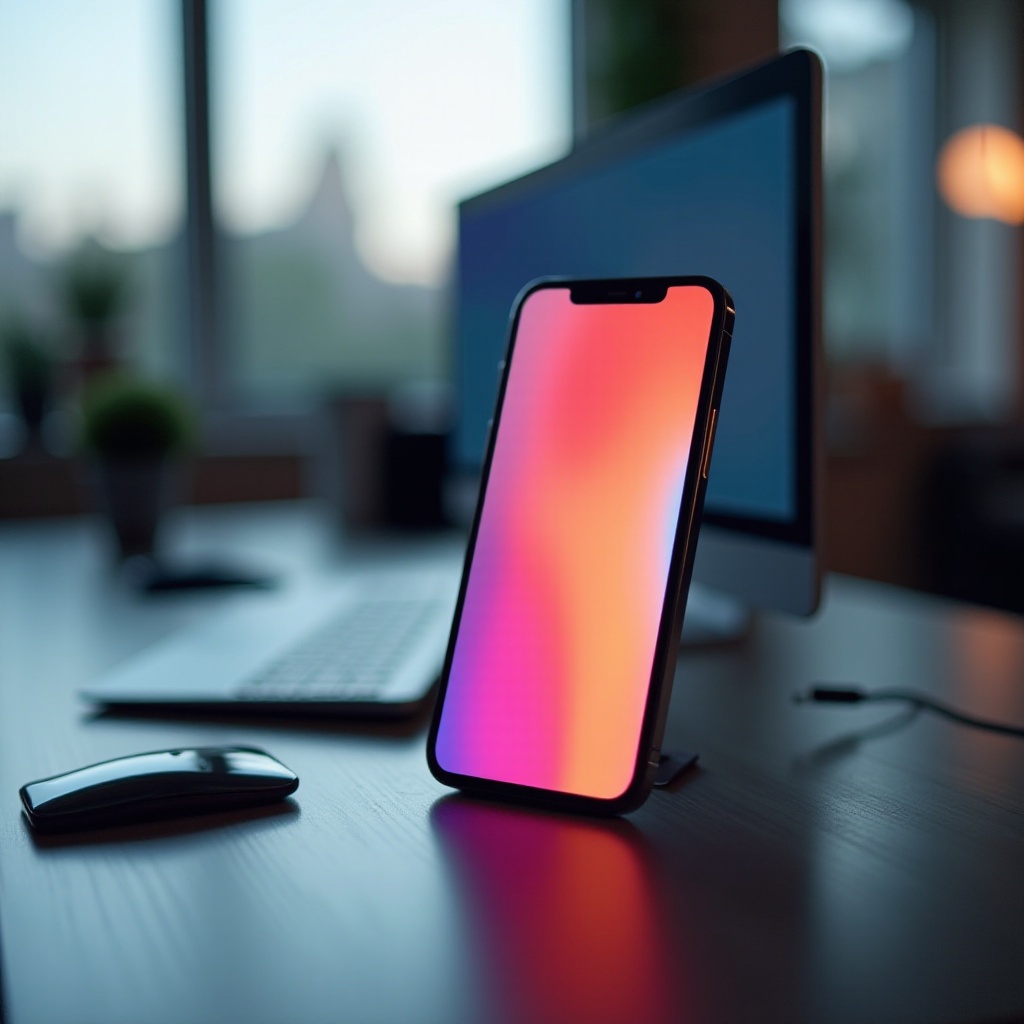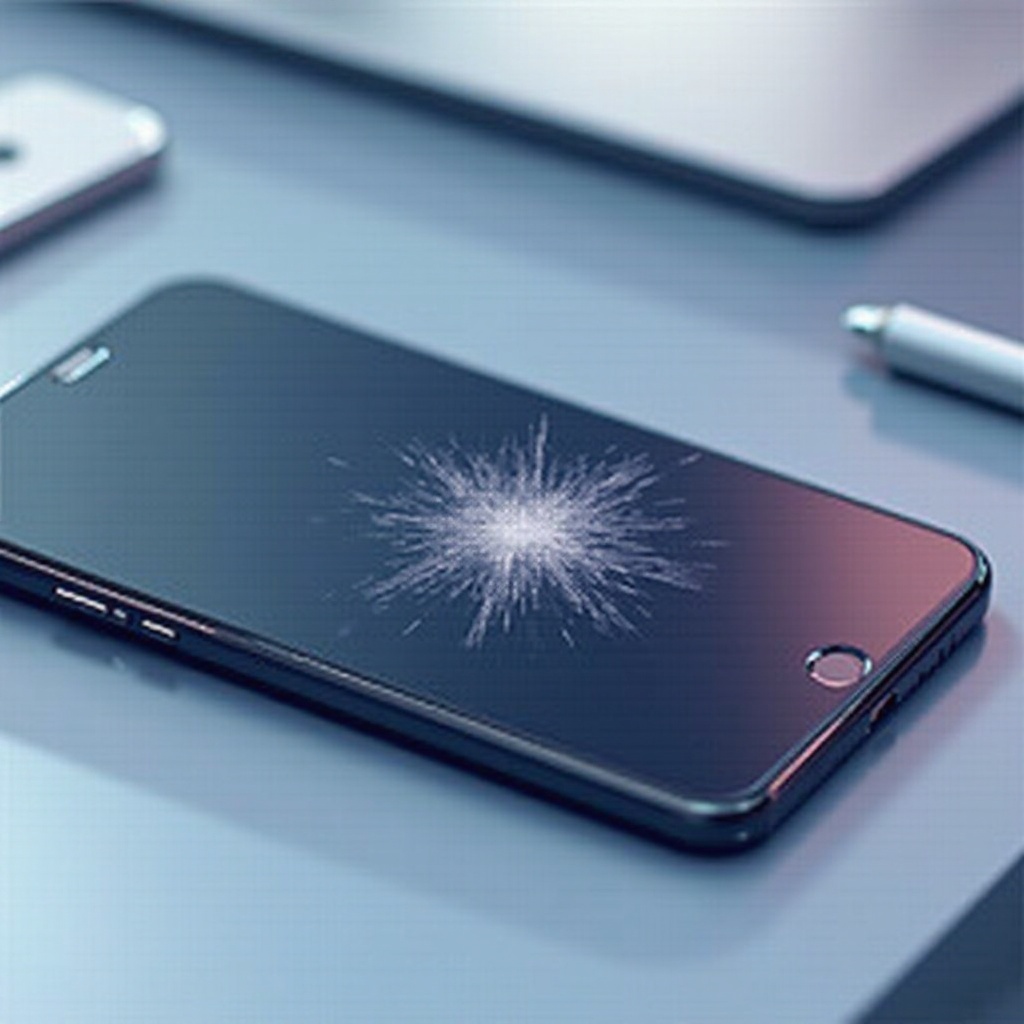Introduction
In the era of cutting-edge technology, smartphones have seamlessly integrated into everyday life, with the iPhone leading in innovation. However, issues like screen burn-in still surface, impacting even the most sophisticated devices. For iPhone users, understanding burn-in and its prevention is vital to maintain their device’s optimal performance and longevity. Screen burn-in can mar user experience by causing permanent discoloration and ghost images to linger on the screen. This article explores iPhone burn-in, its occurrence, identification, solutions, preventive measures, and the future of screen technology in 2024 and beyond.

What is iPhone Burn-In?
iPhone burn-in refers to the permanent imprint of static images on a screen due to prolonged exposure. When static images remain fixed for extended durations, certain pixels wear out faster, leaving ghost images or discolorations visible on screens, including those of smartphones. OLED screens, prevalent in iPhones, are more prone to burn-in due to their organic compounds, which degrade unevenly over time.
While not universally experienced among all users, individuals who regularly use their iPhones for activities involving static images, like navigation or gaming, are more susceptible. Understanding iPhone burn-in is crucial for users to undertake preventive and mitigation measures proactively.
How Does Burn-In Occur?
Burn-in is triggered when certain areas of your iPhone screen display static elements for long periods. Unlike LCDs, OLED screens use organic compounds emitting light when electrified, which degrade over time, especially in screen sections displaying static patterns like app icons or status bars.
Issues stem from settings keeping specific elements persistently displayed. High brightness and static UI elements intensify the effect, creating a lasting ghost image. Furthermore, leaving your phone on without altering display content accelerates screen wear.
Comprehending how burn-in occurs helps you discern patterns contributing to the issue, enabling you to adapt usage habits for prolonged screen life.

Identifying Burn-In on Your iPhone
Identifying iPhone burn-in is straightforward if you understand what to look for. The unmistakable indicator is a persistent image or discolored zone on the screen, regardless of the content displayed. These may appear as faded icons or navigation bars still visible across various apps or interfaces.
To verify burn-in, display a solid color on your iPhone’s screen, highlighting any color irregularities or lingering shadows. Inspect corners, edges, and zones known for static displays for ghosting signs.
Early detection of burn-in allows for steps to mitigate further damage, extending screen longevity and maintaining superior display quality.
Solutions to Fix iPhone Burn-In
Once identified, several methods can help curb burn-in’s visible effects. While complete elimination is rare, these approaches can aid:
- Lower Brightness: Diminishing screen brightness can hinder organic compound degradation.
- Use Apps: Apps are available to cycle colors and attempt screen refreshment to lessen burn-in.
- Screen Replacement: In severe cases, screen replacement might be the sole remedy.
- Adjust Screen Timeout: Decreasing screen auto-lock duration reduces static image exposure, minimizing wear.
These solutions can notably enhance screen appearance and utility, even if some ghost images persist.

Preventive Measures for iPhone Burn-In
Implementing preventive measures is essential for extending your iPhone’s screen life and averting burn-in. Effective strategies include:
- Reduce Static Display Time: Avoid prolonged periods of static images on your iPhone screen.
- Adjust Brightness: Opt for lower brightness levels or use automatic brightness settings.
- Update Display Settings: Incorporate dynamic or motion wallpapers that change frequently.
- Enable Dark Mode: This helps minimize power consumption and static image retention.
- Auto-Lock Settings: Set a brief screen auto-lock time to preclude static displays.
Incorporating these practices into daily use not only prevents burn-in but also maintains optimal performance and display quality over the long term.
Future of iPhone Screen Technology in 2024 and Beyond
Looking ahead, Apple continues to innovate, potentially mitigating burn-in concerns with future iPhone screens. Emerging technologies, such as microLED and advanced OLED iterations, promise notable improvements in color fidelity, efficiency, and burn-in resistance. These advancements aim to elevate display quality while addressing current screen technology limitations.
Meanwhile, software growth may contribute strategies providing automated burn-in mitigation tools, enhancing screen experience resilience. As these technologies evolve, iPhone users can anticipate a diminished risk of screen burn-in, enhancing longevity and visual satisfaction.
Conclusion
Screen burn-in presents a notable challenge for iPhone users, affecting user engagement and visual satisfaction. Understanding burn-in origins, identification methods, solutions, and preventive strategies is crucial for maintaining your iPhone’s peak performance. Although current technology presents limitations, future screen advancements offer hope of reduced vulnerabilities. By adopting preventive measures now, users can assure a more durable and long-lasting device.
Frequently Asked Questions
How can I tell if my iPhone has burn-in?
You can identify burn-in by noticing persistent ghost images or discolored areas on your screen, even when the display content changes.
Is screen burn-in covered under the iPhone warranty?
Typically, screen burn-in is regarded as user wear and tear and may not be covered by standard warranties. However, specifics can vary by carrier or service provider.
Can software updates fix iPhone burn-in?
Software updates can optimize screen settings and power management, potentially minimizing burn-in effects, but they cannot fully resolve existing burn-in.

